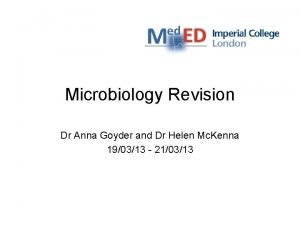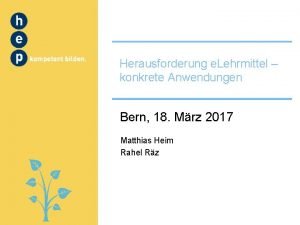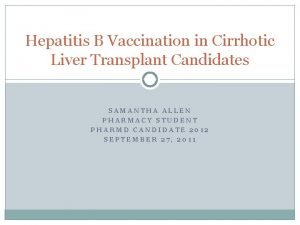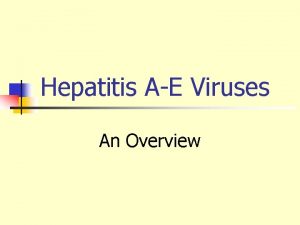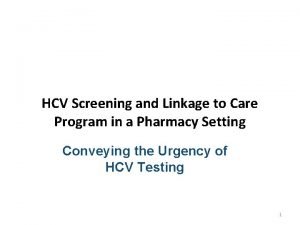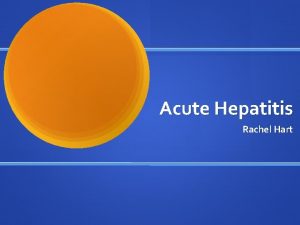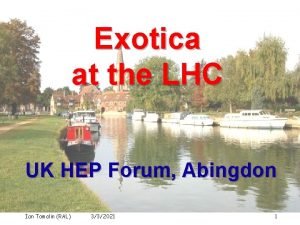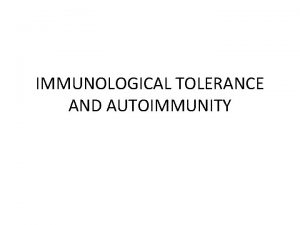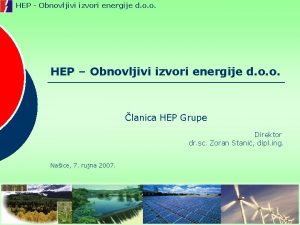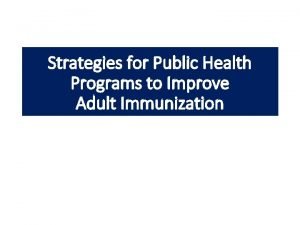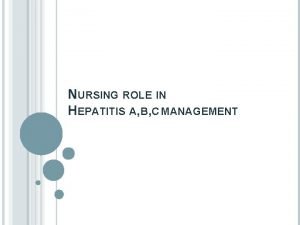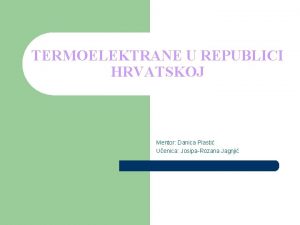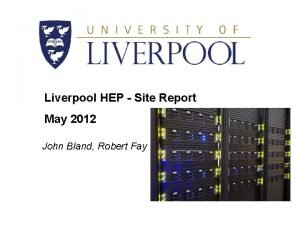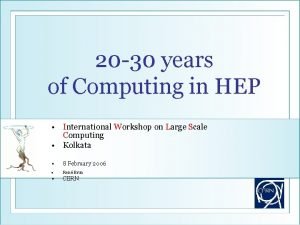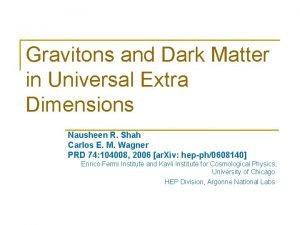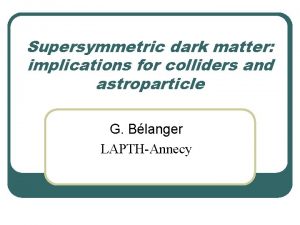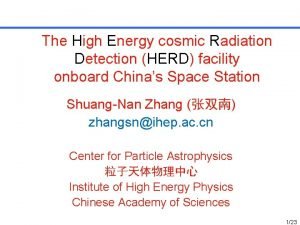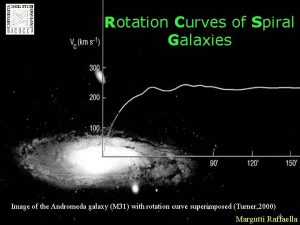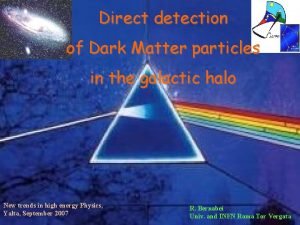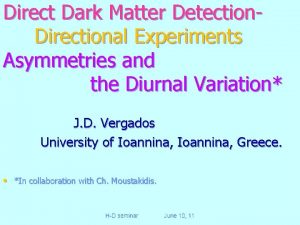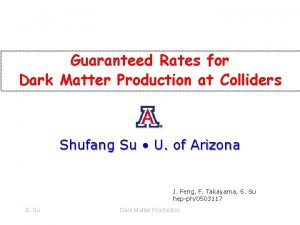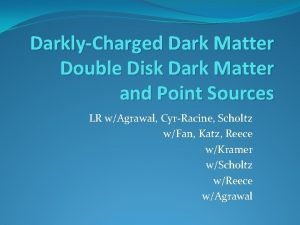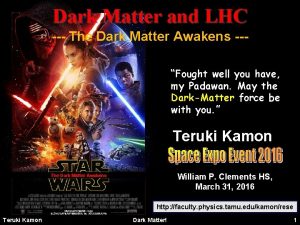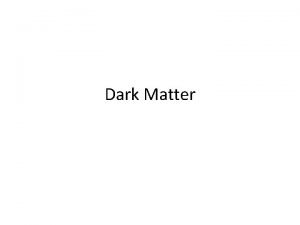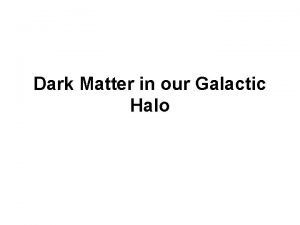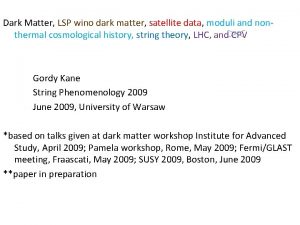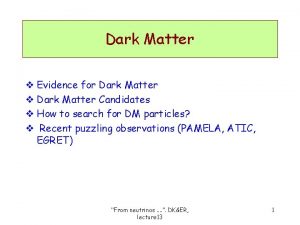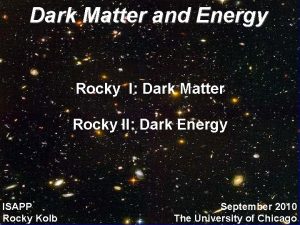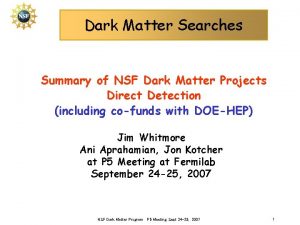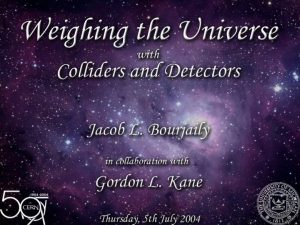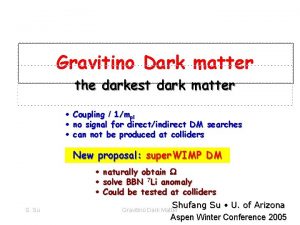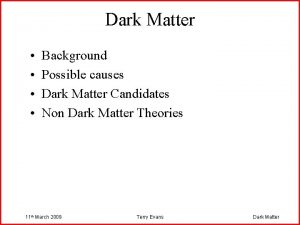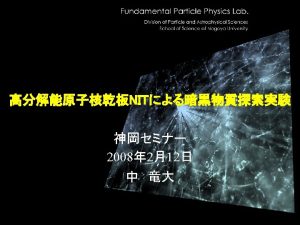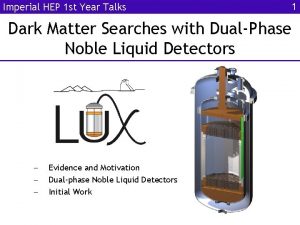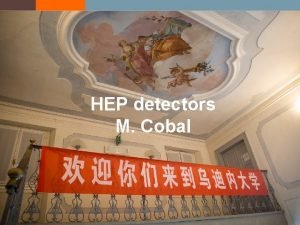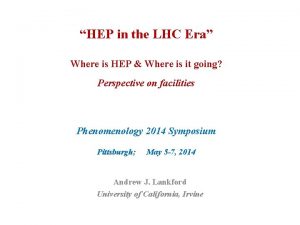Dark Matter at Colliders HEP Theory Dark Matter























- Slides: 23

Dark Matter at Colliders HEP Theory Dark Matter Social event November 22 nd 2019 Eirik Gramstad


Theory: Are Colliders: Me Colliders: Ionut CTA: Eirik SH Theory: Future beam dump: Kyrre

Kyrre Ionut & Me Are Eirik SH Are

Dark Matter at Colliders 1. Production mechanism/theoretical framework 2. Particle detection, identification and results

1) Production mechanism/ theoretical framework

Theoretical Framework Simplified Models Effective Field Theories Model Generality Theoretical Completeness Complete Theories

Theoretical Framework Mediator-based DM models Simplified Models SUSY simplified models [Don’t despair: dedicated seminar Nov. 28 th by Sarah Williams, Cambridge!]

Production: Mediator-based DM models ϕ: mediator χ: dark matter (WIMP) Very few free parameters: mχ, mϕ, Γϕ, g. SM , g. DM, Very rich phenomenology: ar. Xiv: 1507. 00966 Results often shown for spin-0 and spin-1 mediators

2) Particle detection and identification

DM Collider Experiments Focus Mediator-models and SUSY DM Results Public. Results Overview DM Summary Paper Focus Mediator-models and SUSY DM Results Exotics, B 2 G Overview DM Summary Plots Focus B-mesons, dark sector DM Results DMPuzzle 2018, Belle. II Book Focus B-mesons, loops, resonances DM Results Public Page Ionut next talk

The future is bright in the search for the dark (matter)!

Particle Detection • Electrons • Muons • Photons • Jets • B-jets/c-jets • Invisible particles

ETmiss + X (non-resonant) searches High-ETmiss + 1 jet

Resonant searches EXO-19 -012

Dark Photons Resonant ETmiss + X Belle II BELLE 2 -TALK-CONF-2019 -121. pdf PRL 120, 061801 (2018)

Spin-1 mediators Summary. Plots-EXOTICS

Spin-1 mediators Loss of sensitivity for Z’ tt due to increase of Z’ --> χ χ Highest mass reach driven by ETmiss/mjj tails and statistics Change of trigger strategy Loss of sensitivity due to mediator width effects Jet trigger thresholds limiting low-mass reach Annihilation processes described by the simplified model deplete the relic density to below 0. 12

How can we do better? Bandwith = Event Rate x Event Size Limited by: • fast read-out of O(100 M) detector channels • Computing resources (reconstruction) • Disk storage

The Plot Comparing collider with direct detection experiments JHEP 05(2019)142

BACKUP

Long Lived Particles

Workflow common to almost all analyses 1) Define a set of Signal Regions (SR) 2) Define a set of Control Regions (CR) to derive a data driven normalization of simulations with Transfer Factors (TF) 3) Validate the TF in Validation Regions (VR) 4) Unblind SRs and check whether an excess is observed a. If yes; great! b. If no; interpret results in terms of limits on selected models
 Dark matter and dark energy ppt
Dark matter and dark energy ppt In a dark dark town
In a dark dark town Abcdl gram positive rods
Abcdl gram positive rods Dalmatur
Dalmatur Hep b series for adults
Hep b series for adults Chronic hepatitis
Chronic hepatitis Hep c results interpretation
Hep c results interpretation Hcv symptoms female
Hcv symptoms female Forum lhc
Forum lhc Nucloplasm
Nucloplasm Hep obnovljivi izvori energije
Hep obnovljivi izvori energije Hep b vaccines
Hep b vaccines Www.cdc.gov/vaccines/schedules/index.html
Www.cdc.gov/vaccines/schedules/index.html Hep c symptoms
Hep c symptoms Hep
Hep Liverpool hep c
Liverpool hep c Hep international
Hep international Matter gravitons dimensions
Matter gravitons dimensions Boosted dark matter
Boosted dark matter Dark matter
Dark matter Dark matter pwo
Dark matter pwo Dark matter physics
Dark matter physics Where to stream dark matter
Where to stream dark matter What could dark matter be
What could dark matter be


